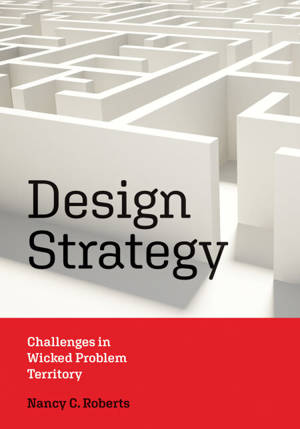
Bedankt voor het vertrouwen het afgelopen jaar! Om jou te bedanken bieden we GRATIS verzending (in België) aan op alles gedurende de hele maand januari.
- Afhalen na 1 uur in een winkel met voorraad
- In januari gratis thuislevering in België
- Ruim aanbod met 7 miljoen producten
Bedankt voor het vertrouwen het afgelopen jaar! Om jou te bedanken bieden we GRATIS verzending (in België) aan op alles gedurende de hele maand januari.
- Afhalen na 1 uur in een winkel met voorraad
- In januari gratis thuislevering in België
- Ruim aanbod met 7 miljoen producten
Zoeken
€ 54,21
+ 54 punten
Uitvoering
Omschrijving
A new approach to addressing the contemporary world’s most difficult challenges, such as climate change and poverty.
Conflicts over “the problem” and “the solution” plague the modern world and land problem solvers in what has been called “wicked problem territory”—a social space with high levels of conflict over problems and solutions. In Design Strategy, Nancy C. Roberts proposes design as a strategy of problem solving to close the gap between an existing state and a desired state. Utilizing this approach, designers and change agents are better able to minimize self-defeating conflicts over problems and solutions, break the logjam of opposition, and avoid the traps that lock problem solvers into a never-ending cycle of conflict.
Design as a field continues to grow and evolve, but Design Strategy focuses on three levels of design where “wicked problems” tend to lurk—strategic design (of private and public organizations), systemic design (of networked and overlapping economic, technical, political, and social subsystems), and regenerative design (of life-giving realignment between humanity and nature). Within this framework, Roberts presents refreshingly interdisciplinary case studies that integrate theory and practice across diverse fields to guide professionals in any domain—from business and nonprofit organizations to educational and healthcare systems—and finally offers hope that humanity can tackle the existential challenges we face in the twenty-first century.
Conflicts over “the problem” and “the solution” plague the modern world and land problem solvers in what has been called “wicked problem territory”—a social space with high levels of conflict over problems and solutions. In Design Strategy, Nancy C. Roberts proposes design as a strategy of problem solving to close the gap between an existing state and a desired state. Utilizing this approach, designers and change agents are better able to minimize self-defeating conflicts over problems and solutions, break the logjam of opposition, and avoid the traps that lock problem solvers into a never-ending cycle of conflict.
Design as a field continues to grow and evolve, but Design Strategy focuses on three levels of design where “wicked problems” tend to lurk—strategic design (of private and public organizations), systemic design (of networked and overlapping economic, technical, political, and social subsystems), and regenerative design (of life-giving realignment between humanity and nature). Within this framework, Roberts presents refreshingly interdisciplinary case studies that integrate theory and practice across diverse fields to guide professionals in any domain—from business and nonprofit organizations to educational and healthcare systems—and finally offers hope that humanity can tackle the existential challenges we face in the twenty-first century.
Specificaties
Betrokkenen
- Auteur(s):
- Uitgeverij:
Inhoud
- Aantal bladzijden:
- 522
- Taal:
- Engels
- Reeks:
Eigenschappen
- Productcode (EAN):
- 9780262376594
- Verschijningsdatum:
- 13/11/2023
- Uitvoering:
- E-book
- Beveiligd met:
- Adobe DRM
- Formaat:
- ePub

Alleen bij Standaard Boekhandel
+ 54 punten op je klantenkaart van Standaard Boekhandel
Beoordelingen
We publiceren alleen reviews die voldoen aan de voorwaarden voor reviews. Bekijk onze voorwaarden voor reviews.









